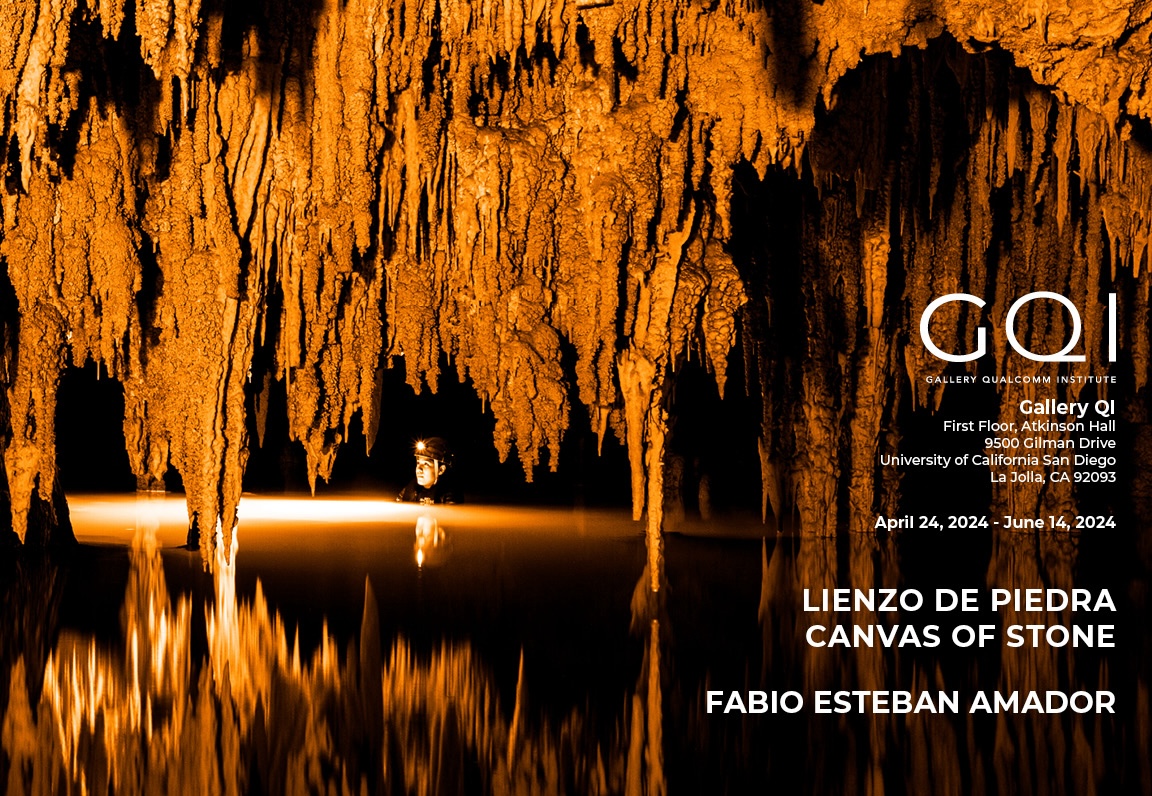“Lienzo de Piedra” / “Canvas of Stone” Gallery QI Exhibit

Date: April 24 - June 14, 2024
Location: UC San Diego Atkinson Hall Gallery QI
“Lienzo de Piedra” / “Canvas of Stone” is a photographic journey through the Pool Tunich cave system of Quintana Roo, Mexico. Featured images were taken during a month-long expedition through the system, captured in a vibrant palette of light and shadow intended to evoke the qualities and values of the caves’ historical use and cultural significance. Photographs of cave features intermingle with a navigable projection of LIDAR point clouds that recreate the system in 3D.
The Maya viewed the cave as an entrance or portal to the Underworld, a real and mythological place that provided the substance for life, ritual and vision. Today, these spaces exist in close proximity to large-scale infrastructure projects. Through a union of art and technology, “Lienzo de Piedra” / “Canvas of Stone” is part of an ongoing effort to document and preserve this part of Mexico’s cultural heritage for posterity.
“Lienzo de Piedra” / “Canvas of Stone” will be open for viewing with the Gallery QI from Wednesday, April 24 through Friday, June 14, 2024. The Gallery QI is open from noon to 5 p.m., Monday through Friday. For more information, see the Gallery QI website.
About the Artist
Fabio Esteban Amador is an archaeologist and visual artist hailing from El Salvador. By merging art and science, Amador continually crafts a visual language that infuses his multimedia art, murals, paintings, photography and short film. Amador studied fine arts at the Art Student League of New York and School of Visual Arts. He continued his studies at Rutgers University and earned a master’s and Ph.D. in Mesoamerican archaeology from the State University of New York at Buffalo. His doctoral research focused on excavating and mapping Maya sites across the states and regions of the Northern Yucatan peninsula and Quintana Roo, Mexico to investigate how groups established their identity through art and iconography. Amador’s later work has also included locations throughout Maya regions of El Salvador, Honduras and Guatemala. He was founding member of OLAS (Latin American Underwater Archaeology Organization) and a research associate at INA (Institute for Nautical Archaeology). Amador has also operated as a program and science officer for the National Geographic Society and has contributed to National Geographic Mundo’s television series “Mysteries of the Underworld.” His work has been published and exhibited by the National Geographic Magazine, iWatch Magazine, Tres Tiempos Magazine, The NatGeo Museum in Washington, Museo de Antropología David J. Guzman in San Salvador, the International Center for the Arts in Spartanburg, SC and NatGeo’s online Explorer’s Journal.
The Gallery QI would also like to acknowledge Scott McAvoy for his support in producing a visualization of Pool Tunich, and Grupo Rio Secreto for partnering in capturing the data of cave system used in the project.